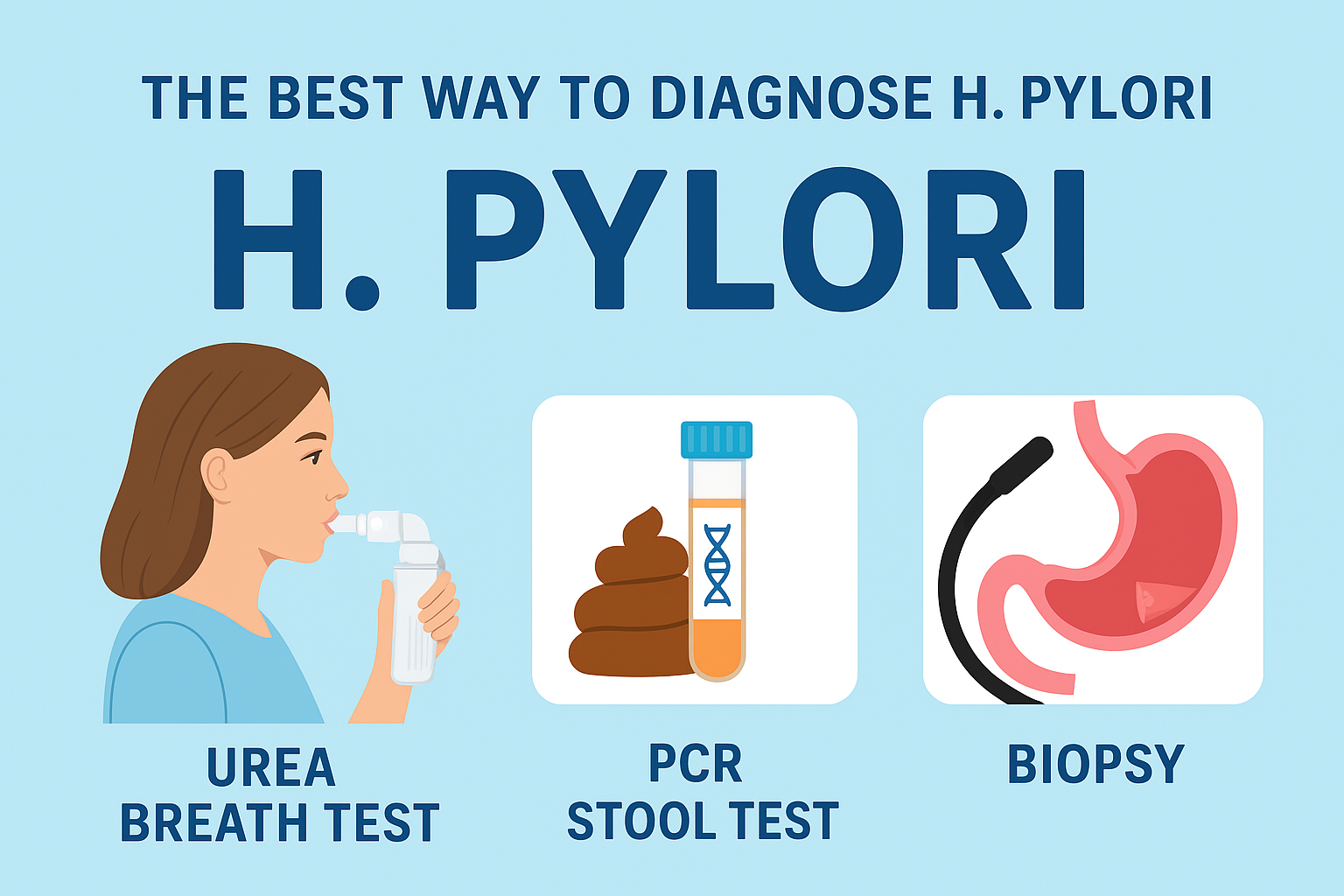What is H. pylori and why does diagnosis matter?
Helicobacter pylori (H. pylori) is a common stomach bacterium linked to gastritis, peptic ulcers, and even gastric cancer. Accurate diagnosis is crucial, because treatment usually involves antibiotics plus acid suppression. If the infection is missed, patients may continue to suffer, while incorrect diagnosis may expose them to unnecessary medications.
Why is biopsy not always reliable for detecting H. pylori?
A biopsy is taken during an endoscopy, where stomach tissue samples are examined. While it helps assess inflammation and detect precancerous changes, it has drawbacks when used for H. pylori diagnosis:
Sampling error – H. pylori colonizes the stomach patchily. A sample may miss the bacteria.
Invasiveness – Requires sedation, specialized equipment, and carries small risks like bleeding or discomfort.
Medication interference – Proton pump inhibitors, antibiotics, and bismuth reduce bacterial density, lowering accuracy.
Variable accuracy – Depends on lab technique, staining, and number of samples.
What is the urea breath test and why is it considered the gold standard?
The urea breath test (UBT) is a simple, non-invasive test. Patients drink a solution containing urea labeled with carbon. If H. pylori is present, its urease enzyme breaks it down, releasing labeled carbon dioxide that is measured in the breath.
Advantages of the UBT:
Sensitivity and specificity above 90–95%.
Safe and non-invasive for adults and children.
Excellent for post-treatment confirmation, even at low bacterial levels.
Results are quick, usually same-day.
Is the urea breath test uncomfortable or unsafe?
Not at all. The solution is typically flavored and easy to drink.
Most breath tests use ¹³C (non-radioactive) urea, which is completely safe — even in children and pregnant women.
In some cases, ¹⁴C (radioactive) urea is used, but the dose is so tiny that it’s far below everyday background radiation exposure.
How long it takes: The full test usually takes 20–30 minutes — with a baseline breath sample, a short waiting period after drinking the solution, and a second breath sample.
What is PCR stool testing and how does it compare?
PCR (polymerase chain reaction) stool testing detects H. pylori DNA directly in a stool sample. Unlike biopsy, it reflects the whole gastric colonization, not just one tissue site.
Advantages of PCR stool testing:
No sampling error, making false negatives less likely.
Can detect antibiotic resistance genes (e.g., clarithromycin, levofloxacin), helping guide therapy.
Non-invasive and convenient once the sample is collected.
Sensitivity and specificity often exceed 90%.
Downside: The main drawback is collecting and handling the stool sample, which some patients find unpleasant.
Which test is best for follow-up after treatment?
Both the urea breath test and PCR stool test are excellent for confirming eradication. Biopsy is less reliable after treatment, since bacteria may exist in very low numbers or in areas not easily sampled.
When is biopsy still useful?
Biopsy still plays a role when:
There is concern about gastric cancer or precancerous lesions.
Endoscopy is already planned for another reason (e.g., ulcers, bleeding).
Histological evaluation of the stomach lining is clinically important.
Bottom line: Which test should patients choose?
For convenience and comfort: The urea breath test is usually the best option.
For resistance testing: PCR stool testing is superior because it provides genetic insights.
For high-risk cases needing mucosal evaluation: Biopsy remains valuable but should not be the first-line diagnostic tool.
In summary: For most patients, the urea breath test and PCR stool test are superior to biopsy for diagnosing H. pylori. They are accurate, safe, cost-effective, and non-invasive — making them the modern standard of care.


